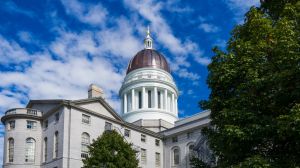The U.S. is barreling toward a government shutdown. Congress has so far failed to agree on spending legislation to fund the government starting Oct. 1. But didn’t the U.S. just deal with a spending crisis a few months back?
Government shutdowns and debt ceiling debacles are often conflated. Here are the differences between a government shutdown and a debt default.
Government Shutdown
Congress is supposed to pass spending legislation to fund government operations every fiscal year, which starts on Oct. 1.
If Congress fails to pass these bills, agencies won’t have enough money to keep the lights on and end up shutting down to save resources.
Most of the time, that means non-essential employees go home furloughed and government work doesn’t get done until a deal is reached. Often, essential employees like military personnel are required to work without pay.
When a deal is reached, employees receive back pay, but the taxpayers foot the bill for lost productivity.
Government shutdowns are usually highly political. In 2013, the government shutdown because conservatives wanted to defund or delay then-President Obama’s Affordable Care Act. In 2018, it was a spat over then-President Trump’s $5 billion funding request for a border wall.
Debt Default
A debt default would be catastrophic for the U.S. economy. Congress sets a hard limit on how much the U.S. can borrow to pay its bills, commonly referred to as the debt ceiling.
When the Treasury Department reaches that ceiling, if Congress doesn’t raise it higher, the U.S. is unable to do things like send out Social Security checks or make payments on its debt, jeopardizing its global reputation.
In June, the U.S. narrowly avoided its first debt default by suspending the $31.4 trillion borrowing limit until January 2025, after the election.
Even though the U.S. avoided a default, Fitch Ratings cut the U.S. credit rating by one notch in response.
“In Fitch’s view, there has been a steady deterioration in standards of governance over the last 20 years, including on fiscal and debt matters,” the agency said when announcing the rating cut. “The repeated debt-limit political standoffs and last-minute resolutions have eroded confidence in fiscal management.”









